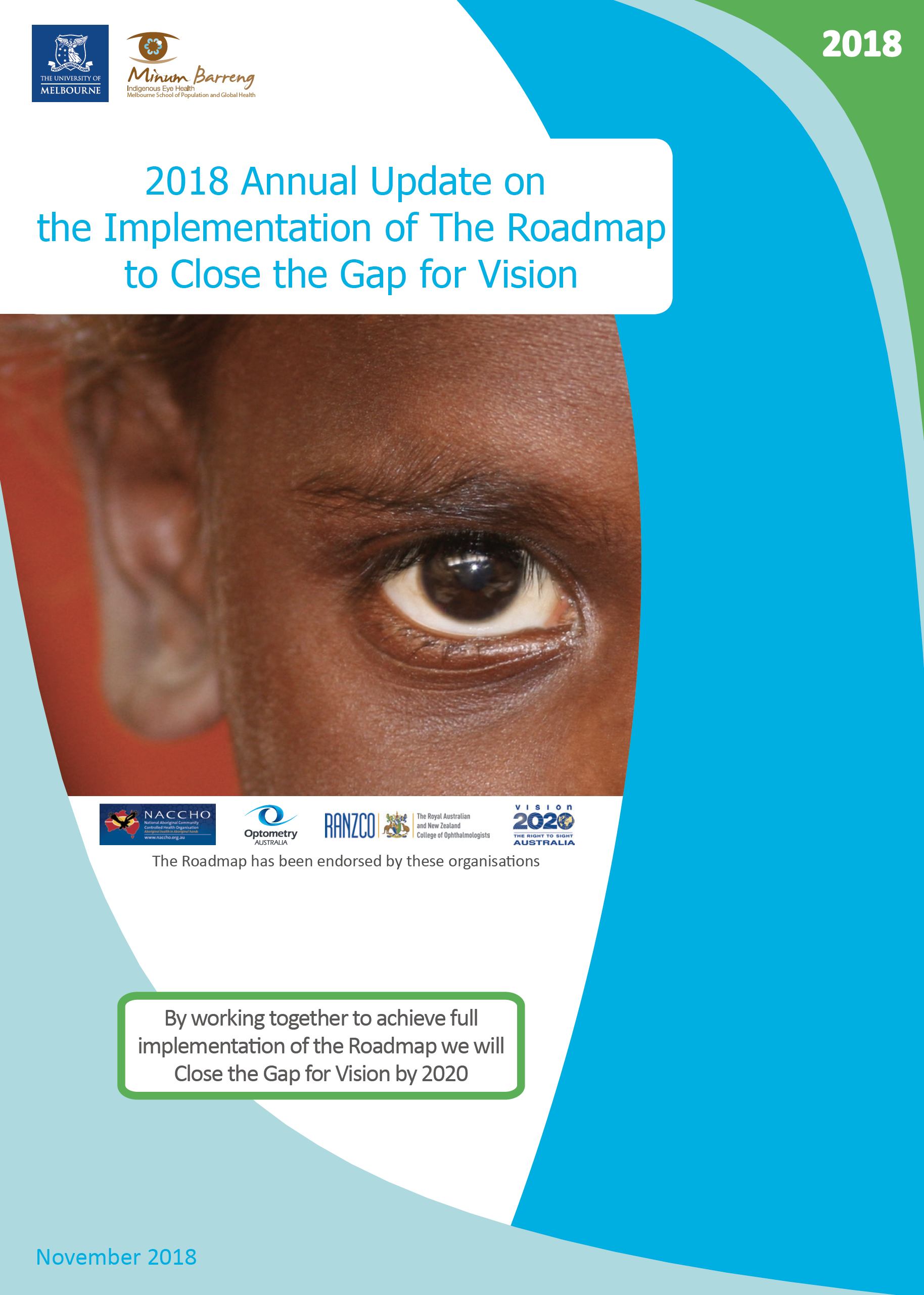2018 Annual Update on the Implementation of The Roadmap to Close the Gap for Vision
VIEW THE 2018 ANNUAL UPDATE REPORT
The 2018 Annual Update on the Implementation of The Roadmap to Close the Gap for Vision was launched on Monday 19 November at the 50th Annual Scientific Congress of the Royal Australian and New Zealand College of Ophthalmologists in Adelaide by Shane Mohor, CEO of the Aboriginal Health Council of South Australia and Professor Hugh Taylor, Head of Indigenous Eye Health at Melbourne University. Dr Heather Mack, President-Elect of RANZCO hosted the launch.
“It is terrific to see the progress that has been made with great work being done by the Aboriginal and Torres Strait Islander health organisations and all of our partners in eye health,” Professor Taylor said. Progress includes:
- 19 of 42 systemic issues identified in Indigenous eyecare have been fixed and three quarters of the intermediate activities have been completed
- In 2008 blindness and impaired vision among Indigenous people were six times the national rate. Now it is down to three times the national rate
- A third of Indigenous adults have diabetes and are at risk of blindness through diabetic retinopathy
- Up to 98 per cent of diabetes-related blindness can be prevented through annual eye exams and timely treatment in the disease’s early stages
- Diabetic retinopathy cameras and trained operators are being placed in more than 150 Aboriginal health clinics across Australia
- 53 of 63 regions across the country are now working to co-ordinate eye care for Indigenous people – covering more than 70 percent of the nation’s Indigenous population
- The rate of trachoma, a blinding eye infection passed child to child and prevented by keeping faces clean, dropped from 21 per cent in outback children in 2008 to 3.8 per cent in 2018 and is on track to be eliminated by the end of 2020
- Australia remains the only developed country with endemic trachoma, which is only found in Indigenous communities. Prompt repair and maintenance of washing facilities is key to helping children wash faces, while more timely data-reporting would allow targeted intervention in trachoma hot spots.
“All of these improvements are very encouraging, but more needs to be done if we want to achieve our goal of giving all Aboriginal and Torres Strait Island people the same eye health as other Australians,” Professor Taylor said.
“It is crucial that we keep working closely with local communities through Aboriginal Community Controlled Health Organisations, and at higher levels to make sure that services are properly provided and resourced across states and territories.”
Media enquiries: Kathryn Powley | 0428 734 902 | Kathryn.powley@unimelb.edu.au
